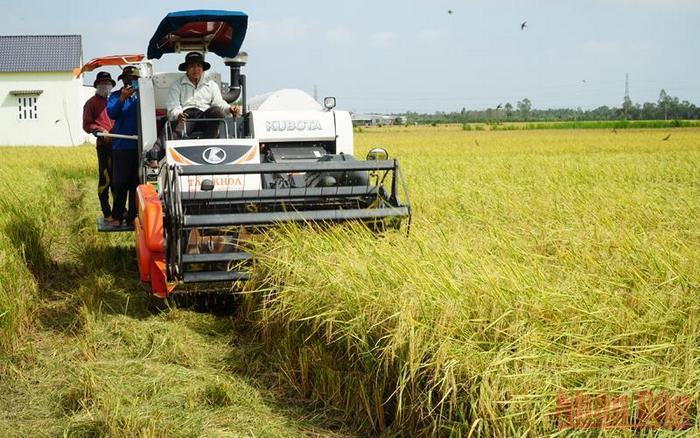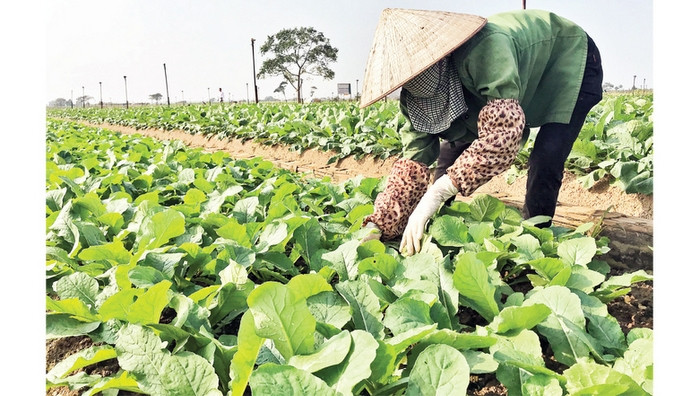Striving to bring Vietnamese agriculture to top of the world
Deputy Prime Minister Le Van Thanh has signed a strategy for sustainable development of agriculture and rural areas for 2021 - 2030, with a vision to 2050.
The general goal is to develop cash crop cultivation based on local advantages towards high productivity, quality, effectiveness, sustainability, and competitiveness; firmly guarantee national food security; and substantially help with socio-economic stability, natural disaster and epidemic prevention and control, climate change response, and the effective implementation of international commitments on greenhouse gas emission reduction.
The strategy also aims to improve income, life quality, role, and stature of agricultural stakeholders; as well as create non-agriculture jobs to help rural residents alleviate poverty and ensure equal development opportunities among the regions.
In addition, the strategy is expected to help comprehensively develop rural areas in association with the process of urbanisation with synchronous infrastructure and social services; uphold and bring into play the national cultural identity; and boost the building of green, clean and beautiful rural areas.
Under the strategy, the agricultural and rural economic development will be combined with new-style countryside building towards efficient ecological agriculture modern rural areas and civilized farmers.
The detailed targets for 2030 define that the agriculture - forestry – fisheries sector should achieve GDP growth of 2.5 – 3 percent and see an increase of 5.5 - 6 percent in labour productivity each year on average. The sector is expected to expand and develop its market, especially its export market, to reach a 5 - 6 percent rise in exports each year.
The strategy targets the rise of people’s income and sustainable poverty reduction. In particular, the income of rural residents will be raised 2.5 - 3 times from that of 2020 and the multidimensional household poverty rate will be brought down by 1-1.5 percent per year.
The proportion of agricultural workers will be reduced to less than 20 percent among the total workers in society; meanwhile, the rate of trained agricultural workers will be increased to over 70 percent.
Under the strategy, Vietnam will have at least 90 percent of the communes nationwide recognised as new-style rural areas, develop environmentally friendly agriculture adapted to climate change, and reduce greenhouse gas emissions by 10 percent from 2020.
The forest coverage rate is expected to maintain at 42 percent and the forest area certified for sustainable forest management will be over 1 million hectares. The area of marine and coastal conservation zones will be increased to reached 3-5 percent of the natural area of the national sea.
With a vision to 2050, Vietnam strives to become a countries with one of the leading agriculture sectors in the world, with a modern, efficient and environmentally friendly agricultural product processing industry. The countryside will no longer have poor households, thus becoming civilised, green, clean and beautiful areas with living conditions and income of rural residents in harmony with that of urban areas.

Farmers in Soc Trang province harvesting rice (Photo: NDO)
Continuing the completion of agricultural production structure
The strategy also sets out orientations and tasks for sustainable agricultural and rural development. Specifically, it is necessary to complete the agricultural production structure in association with competitive advantages and market requirements.
The cultivation sector should renovate crop structure and implement a more flexible management regime for agricultural land use purposes in order to take its advantage as a strategic production industry that ensure domestic demand and serve exports. It is essential to prioritise the development of crops with great comparative advantages and demand (industrial crops, tropical fruit trees and high-quality rice). In addition, appropriate steps should be taken to boost the development of new promising crops including medical plants, ornamental plants and edible mushrooms.
Rice production needs to promote the advantages of Vietnam's rice industry, along with innovations in thinking, management policies, and land use for rice cultivation and rice production.
Meanwhile, the livestock industry must ensure the essential needs of food for the domestic market, develop potential products and markets, and maintain the raising of pigs and large cattle. Specifically, the indigenous livestock and poultry and high-value specialties will be developed to ensure food safety environmental sustainability, biosecurity, and prevention from disease.
It is crucial to boost industrial animal husbandry through the application of high technology at large farms and enterprises and encourage traditional household farming with improvements towards professionalisation and organic farming.
The fishery industry should be developed into a strategic production industry, ensuring domestic demand and serving exports, focusing on concentration farming and modern technology for large-scale production facilities. Meanwhile, small-scale households will apply improved technology and organic farming in combination with cage farming.
Efforts should be enhanced to turn the forestry into a modern economic-technical sector with high efficiency, improving the people’s income and significantly contributing to the country’s socio-economic development, ecology protection, water security, natural disaster mitigation, response to climate change, and national defence and security.
The Strategy also requires the organisation of important stages in production to improve efficiency and ensure sustainable development as well as promotes cooperation and development of value chains and advanced agricultural models.
The development of rural economy will create jobs and raise income of rural residents. Therefore, it is essential to build civilised and modern countryside in association with the urbanisation and preservation of traditional culture.
The Government assigned the Ministry of Agriculture and Rural Development to chair and coordinate with ministries, agencies and localities in the implementation of the Strategy. The ministry will review the situation and report to the Prime Minister annually. A preliminary review will be held in 2025 and the strategy’s results will be reviewed in 2030.
















